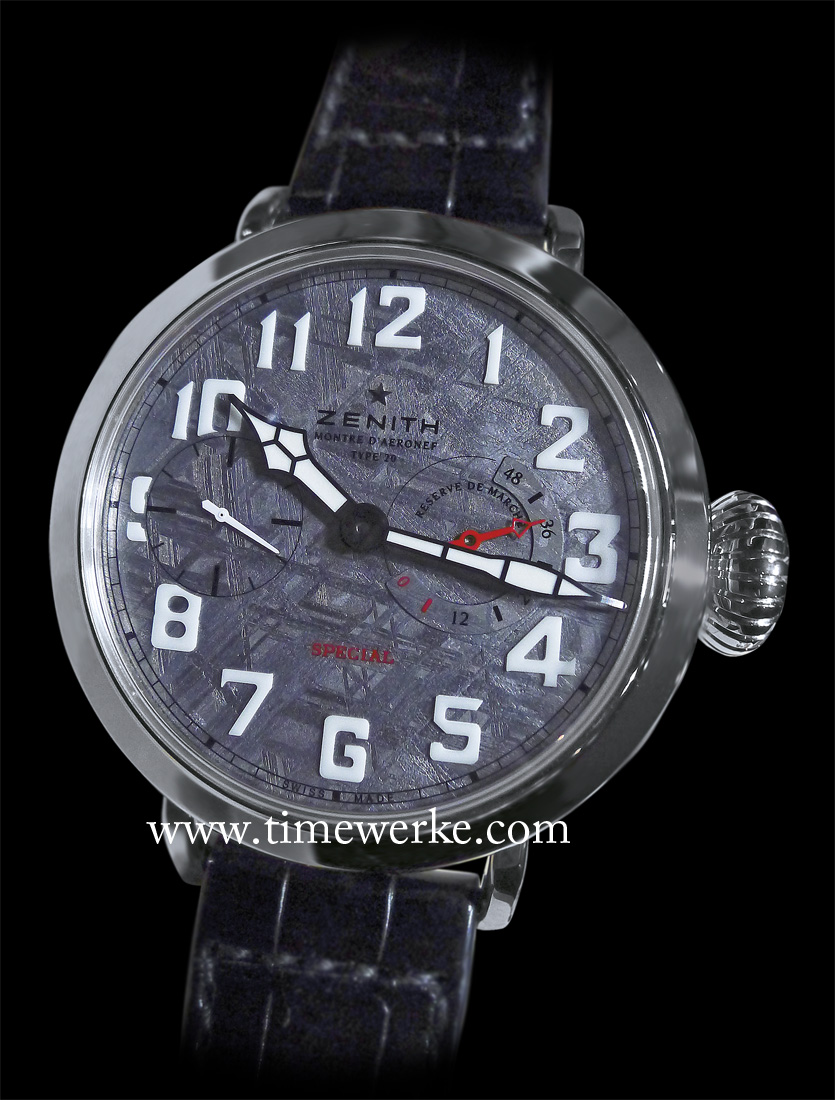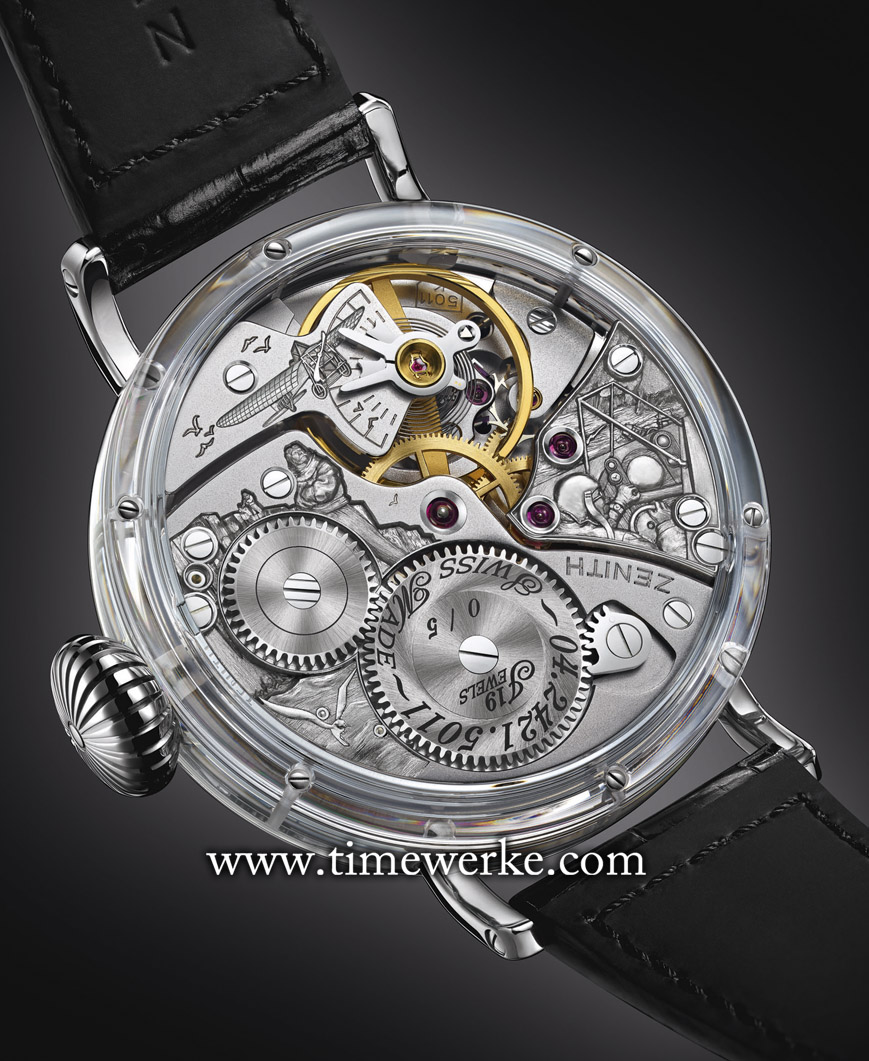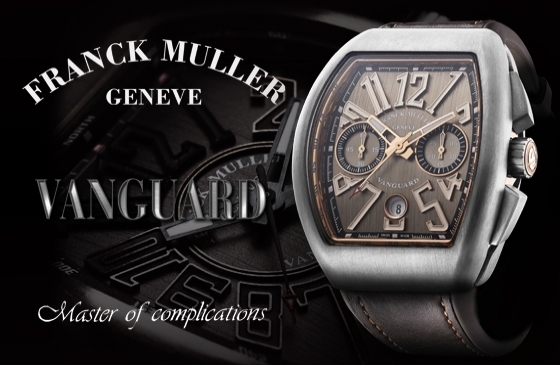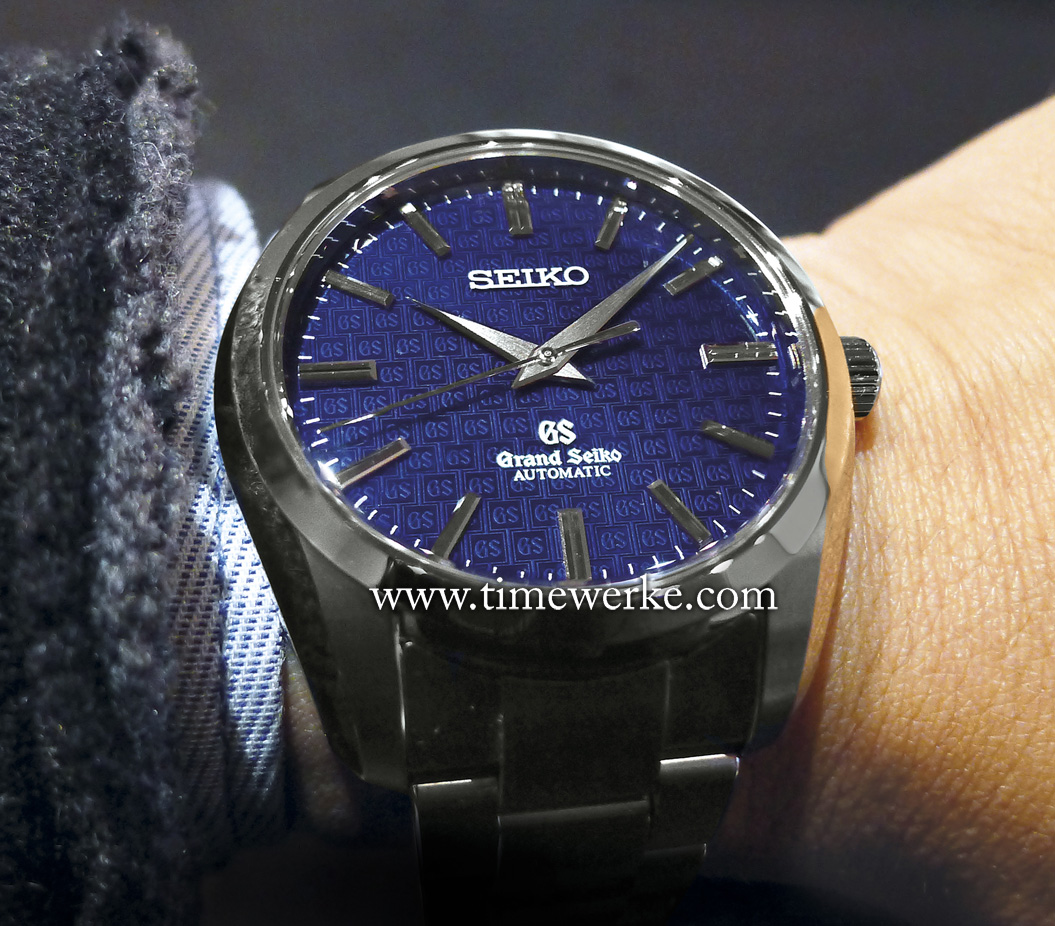
Zenith Pilot Type 20 Hommage à Louis Blériot. Introduced in 2015, it features a meteorite dial. The meteorite is from the Muonionalusta asteroid which impacted Earth some one million years ago. The numerous triangular formations observed on the dial indicates that this is most likely an iron meteorite, one that is made almost entirely out of metal as it bears the Widmanstätten pattern. Limited to 5 pieces. Photo: © TANG Portfolio. Elfa / Timmy. BaselWorld 2015.
In 2015, Zenith paid homage to French pilot Louis Blériot’s adventurous and conquering spirit with its Pilot Type 20 Hommage à Louis Blériot featuring a meteorite dial.
Who was Louis Blériot? Louis Blériot (1872 to 1936) was an aviator and airplane manufacturer who became famous as the first to fly an airplane across the English Channel from Calais, France to Dover, England on 25 July 1909.
He flew in his Blériot XI, a monoplane with a 25-horsepower engine and his achievement allowed him to claim the £1,000 prize offered by the Daily Mail.
Louis Blériot subsequently became a leading aircraft manufacturer. It is said that between July 1909 and the start of the First World War in August 1914, his Blériot factory produced around 800 aircraft, most of which were Type XI monoplanes or its variations.
The “embryonic air forces of France, Britain, Italy, Austria and Russia all operated Blériot machines, and flying clubs as far afield as Australia purchased his monoplanes,” according to the Encyclopedia Brittanica.
On the dial of the Pilot Type 20 Hommage à Louis Blériot is what the brand describes as a deep grey meteorite dial that is fascinating and with a “… natural motif forming interlacing ribbons against a finely sandblasted background”.
The meteorite is from the Muonionalusta asteroid which impacted Earth around one million years ago and landed somewhere between Sweden and Finland, a region located 140km from the Arctic Circle.
The numerous triangular formations observed on the dial indicates that this is most likely an iron meteorite, one that is made almost entirely out of metal as it bears the Widmanstätten pattern.
This pattern is named after Count Alois von Beckh Widmanstätten, the director of the Austrian Imperial Porcelain Works in 1808, and it was created by the interlocking crystal structure of two nickel-iron alloys: kamacite and taenite.

The movement used in the 60mm Zenith Pilot Type 20 Hommage à Louis Blériot is the famed Calibre 5011K. The Calibre 5011K manual-winding movement beats at the frequency of 2.5 Hertz (18,000 vibrations per hour) and has the minimum of 48 hours of power reserve when fully wound. We recommend enlarging this image and having a closer look at the engraving work on the movement that depicts Louis Blériot’s cross-channel flight in 1909 onboard his Blériot XI plane together with his trusted Zenith wristwatch. Photo: © Zenith
Flip the watch over and watch collectors will be pleased to discover Zenith’s famed Calibre 5011K manual-winding movement that is hand-engraved.
This was the movement that was used for marine chronometers and pocket watches, and it found fame by securing for itself the most accurate chronometer award at the 1967 Neuchatel Observatory contest.
This is one of the rare original Calibre 5011K movements that have been restored and decorated. Do look closely at the engraving work on the movement that depicts Louis Blériot’s cross-channel flight in 1909 onboard his Blériot XI plane and his trusted Zenith wristwatch.
The Zenith Pilot Type 20 Hommage à Louis Blériot is limited to only five pieces.
Why is this watch so limited?
Firstly, the Calibre 5011K is an original from the past that is strictly reserved for limited editions only. Secondly, meteorite is not an easy material to work with, let alone create for a watch dial.






